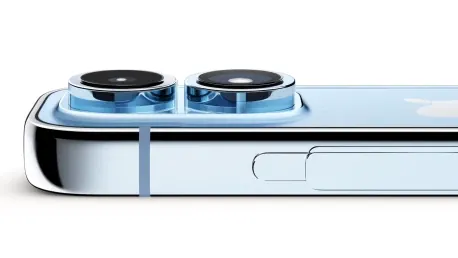With the recent launch of the iPhone 16e, Apple is not only bringing in updated processing power and advanced AI capabilities but also making strategic decisions by phasing out several older products and technologies from their lineup. This move aims to streamline the iPhone experience and ensure a consistent product line as we move towards 2025. This launch demonstrates Apple’s commitment to maintaining a cutting-edge product while aligning with user expectations and current technological trends.
Discontinuing the iPhone 14 Series
Outdated Technologies and Consumer Feedback
Typically, when a new iPhone is released, an older generation model either sees a price drop or is phased out. However, in a surprising move, Apple has discontinued the iPhone 14 series altogether. The decision primarily stems from the outdated technologies embedded in the iPhone 14, such as the always-on display and eSIM support, which received a lukewarm response from consumers. The iPhone 14 also retained the nearly obsolete Lightning port, making its continued production redundant in Apple’s forward-looking product lineup. This step ensures that the focus remains on providing the most current and advanced technology to Apple users.
Streamlining Production and Enhancing Uniformity
In discontinuing the iPhone 14 series, Apple aims to streamline production and ensure uniformity across their product lineup. By eliminating models with outdated features, Apple reduces complexities in manufacturing, customer support, and software updates. This initiative paves the way for a more efficient production process, where focus and resources can be channeled towards developing future innovations. Customers can now expect a more cohesive range of devices, ultimately simplifying their purchasing decisions and enhancing overall satisfaction.
The End of the Lightning Port
The Adoption of USB-C Ports
Another significant change in Apple’s new strategy is the elimination of the Lightning port in favor of USB-C ports across all iPhone models. This shift marks the end of an era that spanned over a decade, as all new models, including the iPhone 16e, will now feature USB-C ports. The move aligns with the global trend of standardizing charging ports across multiple devices, making chargers more universally compatible and reducing electronic waste. This transition also fits seamlessly into the wider ecosystem of modern consumer electronics, facilitating easier connectivity among different gadgets.
Benefits of the Shift to USB-C
The adoption of USB-C ports offers several benefits to both users and manufacturers. For users, it simplifies the experience by allowing them to use a single charger for multiple devices, minimizing the clutter of different cables. Moreover, USB-C ports support faster data transfer rates and more efficient charging, enhancing the overall user experience. Manufacturers, on the other hand, can streamline their production lines by focusing on a universally accepted standard. This not only reduces costs but also ensures consistency and reliability across the entire product range.
Phasing Out Product Red Colorways
Contribution to HIV/AIDS Research and Market Shift
Apple has also decided to phase out the Product Red colorways, which over the years, have significantly contributed to HIV/AIDS research while offering a distinctive visual appeal. However, the market landscape is shifting, with consumer preferences now favoring more neutral color options. This is reflected in the introduction of more understated shades like Black and White for the iPhone 16e. The elimination of these vibrant colorways signals a shift towards a more minimalist and sophisticated design, resonating with contemporary aesthetic sensibilities.
Focusing on Simplicity and Elegance
With the iPhone 16e, Apple seems to be emphasizing simplicity and elegance in its design philosophy. The move away from bold, attention-grabbing colorways to more muted tones aligns with broader trends in consumer electronics, where understated design is gaining traction. By adopting this approach, Apple ensures that the iPhone 16e appeals to a wider demographic, meeting the diverse tastes and preferences of modern consumers. This shift also allows Apple to focus more on the technology and performance aspects of the phone, ensuring that design does not overshadow functionality.
Transitioning from ‘SE’ to ‘e’ Branding
Shifting Perceptions and Expanding Market Reach
The transition from ‘SE’ to ‘e’ branding represents a subtle yet significant shift in Apple’s product positioning strategy. While the ‘SE’ models were marketed as ‘Special Edition,’ the ‘e’ branding suggests a move towards creating models that are seen as essential but not necessarily special. This rebranding is aimed at broadening the market reach and appealing to budget-conscious consumers looking for a reliable yet affordable iPhone option. The iPhone 16e, while still offering substantial performance, is positioned in a way that makes it more accessible to a global audience without compromising on quality.
Maintaining Performance While Reducing Costs
Despite the rebranding, Apple ensures that the new ‘e’ models maintain performance standards that users have come to expect from the iPhone lineup. By focusing on essential features and optimizing manufacturing processes, Apple manages to reduce costs without sacrificing quality. This balance between affordability and performance is crucial in capturing a larger share of the market, particularly in price-sensitive regions. The iPhone 16e embodies this approach, offering a blend of modern technology and accessible pricing, making it a compelling choice for a broad spectrum of consumers.
Removing the Physical Home Button
Enhancing Digital Content Consumption
The removal of the physical home button in the iPhone 16e is a response to the increasing demand for larger screen real estate, driven by the rise in digital content consumption. By eliminating the home button, Apple has been able to incorporate a larger 6.1-inch display, providing users with a more immersive viewing experience. The new design includes a camera notch integrated with Face ID sensors, enhancing user convenience and modernizing the device’s overall look. This change aligns with the current trend of bezel-less smartphones, offering a sleek and contemporary aesthetic.
Improving User Interface and Experience
The removal of the physical home button also paves the way for an improved user interface and overall experience. With more screen space available, Apple can introduce innovative gesture controls, offering a more intuitive and seamless interaction with the device. The design change not only modernizes the iPhone’s appearance but also aligns with Apple’s broader strategy of enhancing user convenience and adopting cutting-edge technologies. The iPhone 16e represents this evolution, promising a more engaging and efficient user experience, in line with contemporary expectations and preferences.
Looking Ahead: Future Considerations and Innovations
Strategic Alignment and Contemporary Design
In summary, Apple’s introduction of the iPhone 16e marks a significant step towards creating a more cohesive and streamlined product lineup. By phasing out older models, discontinuing the Lightning port, eliminating Product Red colorways, transitioning from ‘SE’ to ‘e’ branding, and removing the physical home button, Apple has successfully aligned its products with modern technological trends and consumer expectations. These strategic moves ensure that the iPhone lineup remains relevant, efficient, and appealing to a wide range of users.
Embracing Modern Technologies
With the recent launch of the iPhone 16e, Apple is showcasing its ongoing innovation by incorporating updated processing power and advanced AI capabilities. This new model not only demonstrates significant hardware and software enhancements but also marks a turning point in Apple’s product strategy. As part of this strategic move, Apple is phasing out several older products and technologies from its lineup. This decision is aimed at streamlining the user experience, reducing fragmentation, and ensuring a more consistent and cohesive product line as we approach 2025. By focusing on modernizing and refining its offerings, Apple seeks to remain at the forefront of technological advancements. The iPhone 16e reflects Apple’s dedication to delivering high-quality, cutting-edge products that meet and exceed user expectations. As they align their products with the latest technological trends, Apple continues to pave the way for future innovations in the smartphone industry, reinforcing its position as a leader in the market.









